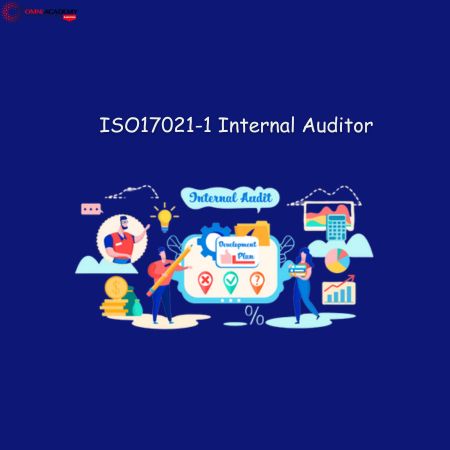IGCSE Chemistry (Online Classes)
IGCSE Chemistry helps learners to understand the technological world in which they live and take an informed interest in science and scientific developments. The syllabus includes the basic principles and concepts that are fundamental to the subject, some current applications of chemistry, and a strong emphasis on practical skills.
Learners also develop an understanding of the scientific skills essential for progression to Cambridge International AS & A Level, further education or a career related to science.
Course Content
1: The particulate nature of matter
• State the distinguishing properties of solids, liquids and gases
• Describe the structure of solids, liquids and gases
in terms of particle separation, arrangement and types of motion
• Describe changes of state in terms of melting, boiling, evaporation, freezing, condensation and
sublimation
• Describe qualitatively the pressure and temperature of a gas in terms of the motion of its particles
• Show an understanding of the random motion of particles in a suspension (sometimes known
as Brownian motion) as evidence for the kinetic particle (atoms, molecules or ions) model of matter
• Describe and explain diffusion
2: Experimental techniques
Measurement
- Name appropriate apparatus for the measurement of time, temperature, mass and volume, including burettes, pipettes and measuring cylinders
3 Purity
Criteria of purity
Core
• Demonstrate knowledge and understanding of
paper chromatography
• Interpret simple chromatograms
• Identify substances and assess their purity from melting point and boiling point information
• Understand the importance of purity in substances in everyday life, e.g. foodstuffs and drugs
Methods of purification
• Describe and explain methods of purification
by the use of a suitable solvent, filtration, crystallisation and distillation (including use ofa fractionating column).
• Suggest suitable purification techniques, given information about the substances involved
4 Atoms, Elements and Compounds
Atomic structure and the Periodic Table
Core
• State the relative charges and approximate relative masses of protons, neutrons and electrons
• Define proton number (atomic number) as the number of protons in the nucleus of an atom
• Define nucleon number (mass number) as the total number of protons and neutrons in the
nucleus of an atom
• Use proton number and the simple structure of atoms to explain the basis of the Periodic Table
(see section 9), with special reference to the elements of proton number 1 to 20
• Define isotopes as atoms of the same element which have the same proton number but a different nucleon number
• State the two types of isotopes as being radioactive and non-radioactive
Atomic structure and the Periodic Table continued
Core
• State one medical and one industrial use of
radioactive isotopes
• Describe the build-up of electrons in ‘shells’ and understand the significance of the noble gas electronic structures and of the outer shell electrons.
Structure and bonding
Bonding: the structure of matter Core
• Describe the differences between elements, mixtures and compounds, and between metals and non-metals
• Describe an alloy, such as brass, as a mixture of a
metal with other elements
Ions and ionic bonds
Core
• Describe the formation of ions by electron loss or gain
• Describe the formation of ionic bonds between elements from Groups I and VII Supplement
• Describe the formation of ionic bonds between metallic and non-metallic elements
• Describe the lattice structure of ionic compounds as a regular arrangement of alternating positive and negative ions
Molecules and covalent bonds
Core
• Describe the formation of single covalent bonds
in H2, Cl2, H2O, CH4, NH3 and HCl as the sharing of pairs of electrons leading to the noble gas
configuration
• Describe the differences in volatility, solubility and electrical conductivity between ionic and
covalent compounds Supplement
• Describe the electron arrangement in more
complex covalent molecules such as N2, C2H4, CH3OH and CO2
• Explain the differences in melting point and boiling point of ionic and covalent compounds in
terms of attractive forces
Macromolecules
Core
• Describe the giant covalent structures of graphite and diamond
• Relate their structures to their uses, e.g. graphite as a lubricant and a conductor, and diamond in
cutting tools Supplement
• Describe the macromolecular structure of silicon(IV) oxide (silicon dioxide)
• Describe the similarity in properties between
diamond and silicon(IV) oxide, related to their structures
Metallic bonding
Stoichiometry
Core
• Use the symbols of the elements and write the formulae of simple compounds
• Deduce the formula of a simple compound from the relative numbers of atoms present
• Deduce the formula of a simple compound from a model or a diagrammatic representation
• Construct word equations and simple balanced chemical equations
• Define relative atomic mass, Ar , as the average mass of naturally occurring atoms of an element on a scale where the 12C atom has a mass of exactly 12 units
• Define relative molecular mass, Mr , as the sum of the relative atomic masses. (Relative formula
mass or Mr will be used for ionic compounds.)
5 Electricity and chemistry
Core
• Define electrolysis as the breakdown of an ionic compound, molten or in aqueous solution, by the
passage of electricity
• Describe the electrode products and the observations made during the electrolysis of:
– molten lead(II) bromide
– concentrated hydrochloric acid
– concentrated aqueous sodium chloride
– dilute sulfuric acid between inert electrodes (platinum or carbon)
• State the general principle that metals or
hydrogen are formed at the negative electrode (cathode), and that non-metals (other thanhydrogen) are formed at the positive electrode (anode)
• Predict the products of the electrolysis of a specified binary compound in the molten state
• Describe the electroplating of metals
• Outline the uses of electroplating
Describe the reasons for the use of copper and
(steel-cored) aluminium in cables, and why
plastics and ceramics are used as insulators
6Chemical Energetics
Energetics of a reaction
Core
• Describe the meaning of exothermic and endothermic reactions
• Interpret energy level diagrams showing exothermic and endothermic reactions
Energy transfer
Core
• Describe the release of heat energy by burning fuels
• State the use of hydrogen as a fuel
• Describe radioactive isotopes, such as 235U, as a source of energy
7 Chemical reactions
Physical and chemical changes
Core
• Identify physical and chemical changes, and understand the differences between them
Rate (speed) of reaction
Core
• Describe and explain the effect of concentration, particle size, catalysts (including enzymes) and
temperature on the rate of reactions
• Describe the application of the above factors to the danger of explosive combustion with fine
powders (e.g. flour mills) and gases (e.g. methane in mines)
• Demonstrate knowledge and understanding of a practical method for investigating the rate of a reaction involving gas evolution
• Interpret data obtained from experiments concerned with rate of reaction
Reversible reactions
Core
• Understand that some chemical reactions can be reversed by changing the reaction conditions.
(Limited to the effects of heat and water on hydrated and anhydrous copper(II) sulfate and cobalt(II) chloride.)
Redox
Core
• Define oxidation and reduction in terms of oxygenloss/gain. (Oxidation state limited to its useto name ions, e.g. iron(II), iron(III), copper(II), manganate(VII).)
8 Acids, Bases and Salts
The characteristic properties of acids and bases
Core
• Describe the characteristic properties of acids as reactions with metals, bases, carbonates and
effect on litmus and methyl orange
• Describe the characteristic properties of bases as reactions with acids and with ammonium salts
and effect on litmus and methyl orange
• Describe neutrality and relative acidity and alkalinity in terms of pH measured using universal indicator paper (whole numbers only)
• Describe and explain the importance of controlling acidity in soil
Types of oxides
Core
• Classify oxides as either acidic or basic, related to
metallic and non-metallic character
Preparation of salts
Core
• Demonstrate knowledge and understanding of
preparation, separation and purification of salts
Identification of ions and gases
Core
• Describe the following tests to identify:
aqueous cations: aluminum, ammonium, calcium, chromium(III),
copper(II), iron(II), iron(III) and zinc (using aqueous sodium hydroxide and aqueous ammonia as appropriate). (Formulae of complex
ions are not required.)
cations:
use of the flame test to identify lithium, sodium,
potassium and copper(II)
anions:
carbonate (by reaction with dilute acid and then limewater), chloride, bromide and iodide (by
reaction under acidic conditions with aqueous silver nitrate), nitrate (by reduction withaluminium), sulfate (by reaction under acidic conditions with aqueous barium ions) and sulfite
(by reaction with dilute acids and then aqueous potassium manganate(VII))
Gases:
ammonia (using damp red litmus paper), carbon dioxide (using limewater), chlorine (using damp litmus paper), hydrogen (using lighted splint), oxygen (using a glowing splint), and sulfur dioxide (usingaqueous potassium manganate(VII))
9The Periodic Table
Core
• Describe the Periodic Table as a method of classifying elements and its use to predict properties of elements
Periodic trends
Core
• Describe the change from metallic to nonmetallic character across a period
Group properties
Core
• Describe lithium, sodium and potassium in Group I as a collection of relatively soft metals showing a trend in melting point, density and reaction with water
• Predict the properties of other elements in Group I, given data, where appropriate
• Describe the halogens, chlorine, bromine and iodine in Group VII, as a collection of diatomic non-metals showing a trend in colour and density and state their reaction with other halide ions
• Predict the properties of other elements in Group VII, given data where appropriate Supplement
• Identify trends in groups, given information about the elements concerned
Transition elements
Core
• Describe the transition elements as a collection of metals having high densities, high meltingpoints and forming colored compounds, and which, as elements and compounds, often act as catalyst
Noble gases
Core
• Describe the noble gases, in Group VIII or 0, as being unreactive, monoatomic gases and explain this in terms of electronic structure
• State the uses of the noble gases in providing an inert atmosphere, i.e. argon in lamps, helium for
filling balloons
10 Metals
Properties of metals
Core
• List the general physical properties of metals
• Describe the general chemical properties of metals, e.g. reaction with dilute acids and reaction with oxygen
• Explain in terms of their properties why alloys are used instead of pure metals
• Identify representations of alloys from diagrams of structure
Reactivity series
Core
• Place in order of reactivity: potassium, sodium, calcium, magnesium, zinc, iron, (hydrogen) and copper, by reference to the reactions, if any, of the metals with:
– water or steam
– dilute hydrochloric acid
and the reduction of their oxides with carbon
• Deduce an order of reactivity from a given set of experimental results
Extraction of metals
Describe the ease in obtaining metals from their ores by relating the elements to the reactivity
series
• Describe and state the essential reactions in the extraction of iron from hematite
• Describe the conversion of iron into steel using basic oxides and oxygen
• Know that aluminium is extracted from the ore bauxite by electrolysis
• Discuss the advantages and disadvantages of recycling metals, limited to iron/steel and aluminium
Uses of metals
Name the uses of aluminium:
– in the manufacture of aircraft because of its
strength and low density
– in food containers because of its resistance
to corrosion
• Name the uses of copper related to its properties
(electrical wiring and in cooking utensils)
• Name the uses of mild steel (car bodies and machinery) and stainless steel (chemical plant
and cutlery)
11 Air and water
Water
Core
• Describe chemical tests for water using cobalt(II) chloride and copper(II) sulfate
• Describe, in outline, the treatment of the water supply in terms of filtration and chlorination
• Name some of the uses of water in industry and in the home
Air
Core
• State the composition of clean, dry air as being approximately 78% nitrogen, 21% oxygen and
the remainder as being a mixture of noble gases and carbon dioxide
• Name the common pollutants in the air as being carbon monoxide, sulfur dioxide, oxides of
nitrogen and lead compounds
• State the source of each of these pollutants:
– carbon monoxide from the incomplete
combustion of carbon-containing substances
– sulfur dioxide from the combustion of fossil
fuels which contain sulfur compounds
(leading to ‘acid rain’)
– oxides of nitrogen from car engines
– lead compounds from leaded petrol
• State the adverse effect of these common pollutants on buildings and on health and discuss
why these pollutants are of global concern
• State the conditions required for the rusting of iron
• Describe and explain methods of rust prevention, specifically paint and other coatings to exclude
oxygen
Nitrogen and fertilisers
Core
• Describe the need for nitrogen-, phosphorus- and potassium-containing fertilisers
• Describe the displacement of ammonia from its salt
Carbon dioxide and methane
Core
• State that carbon dioxide and methane are greenhouse gases and explain how they may contribute to climate change
• State the formation of carbon dioxide:
– as a product of complete combustion of
carbon-containing substances
– as a product of respiration
– as a product of the reaction between an acid
and a carbonate
– from the thermal decomposition of a
carbonate
• State the sources of methane, including decomposition of vegetation and waste gases from digestion in animals
12: Sulfur
Core
• Name some sources of sulfur
• Name the use of sulfur in the manufacture of sulfuric acid
• State the uses of sulfur dioxide as a bleach in the manufacture of wood pulp for paper and as a
food preservative (by killing bacteria)
13 Carbonates
Core
• Describe the manufacture of lime (calcium oxide) from calcium carbonate (limestone) in terms of thermal decomposition
• Name some uses of lime and slaked lime such as in treating acidic soil and neutralising acidic industrial waste products, e.g. flue gas desulfurisation
• Name the uses of calcium carbonate in the manufacture of iron and cement
14:Organic chemistry
Names of compounds
Core
• Name and draw the structures of methane, ethane, ethene, ethanol, ethanoic acid and the
products of the reactions
• State the type of compound present, given a chemical name ending in -ane, -ene, -ol, or -oic acid or a molecular structure
Fuels
Core
• Name the fuels: coal, natural gas and petroleum
• Name methane as the main constituent of natural gas
• Describe petroleum as a mixture of hydrocarbons and its separation into useful fractions by
fractional distillation
• Describe the properties of molecules within a fraction
• Name the uses of the fractions as:
– refinery gas for bottled gas for heating and
cooking
– gasoline fraction for fuel (petrol) in cars
– naphtha fraction for making chemicals
– kerosene/paraffin fraction for jet fuel
– diesel oil/gas oil for fuel in diesel engines
– fuel oil fraction for fuel for ships and home
heating systems
– lubricating fraction for lubricants, waxes and
polishes
– bitumen for making roads
Homologous series
Core
• Describe the concept of homologous series as a ‘family’ of similar compounds with similar chemical properties due to the presence of the same functional group
Alkanes
Core
• Describe the properties of alkanes (exemplified
by methane) as being generally unreactive,
except in terms of burning
• Describe the bonding in alkanes
Alkenes
Core
• Describe the manufacture of alkenes and of hydrogen by cracking
• Distinguish between saturated and unsaturated hydrocarbons:
– from molecular structures
– by reaction with aqueous bromine
• Describe the formation of poly(ethene) as an example of addition polymerisation of monomer units
Details of the assessment
All candidates take three papers.
Candidates who have studied the Core subject content, or who are expected to achieve a grade D or below, should be entered for Paper 1, Paper 3 and either Paper 5 or Paper 6. These candidates will be eligible for grades C to G.
Candidates who have studied the Extended subject content (Core and Supplement), and who are expected to achieve a grade C or above, should be entered for Paper 2, Paper 4 and either Paper 5 or Paper 6. These candidates will be eligible for grades A* to G.
nternational Student Tuition Fee : 300 SAR | 80 USD (Per Month/ Per Course)
NOTE: If you have more than one child, you will need to work out the fees for each child individually. Our program officer will guide your further, please fill the inquiry form below (with you comments – if any).
Packages
| IGCSE Primary | Subject | SAR | USD | PKR |
| Cambridge Primary | English | 200 | 55 | 15,000 |
| Grade 6 | Math | 200 | 55 | 15,000 |
| Science | 200 | 55 | 15,000 | |
| IGCSE Lower Secondary | Subject | SAR | USD | PKR |
| Grade 7-8 | English | 200 | 55 | 15,000 |
| Math | 200 | 55 | 15,000 | |
| Science | 200 | 55 | 15,000 | |
| Cambridge O/A Levels | Subject | SAR | USD | PKR |
| O/A Levels | English | 200 | 55 | 15,000 |
| Math | 200 | 55 | 15,000 | |
| Science | 200 | 55 | 15,000 |
IMPORTANT
- Clearly describe the course level your child will be studying at.
- Select the subjects your child will be studying.
- Siblings fee concession up to 15%.
- Monthly Fee payment option available (as per your selected course duration).
WHY IGCSE Course from OMNI ?
Your Child’s Homeschooling Courses Will Include
FREE Resources
Related Courses
IELTS Preparation For Beginners
Learn how to Speak German – for Germany Visa (COURSE LEVELS A1-C2)
TEFL Course
TOEFL Course






